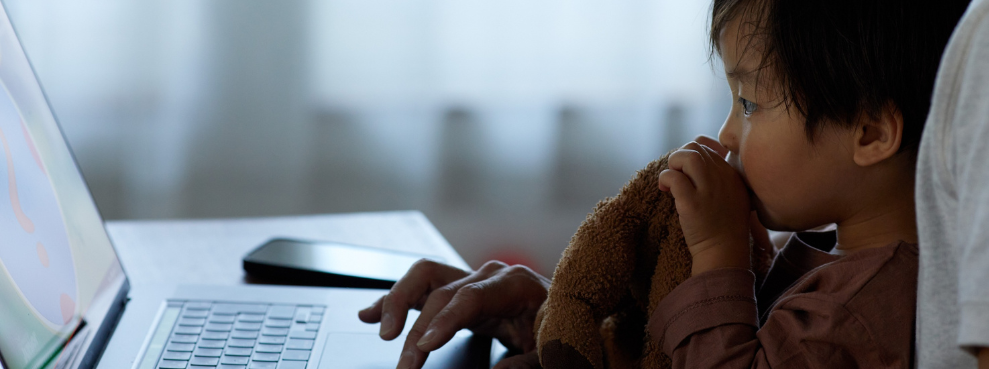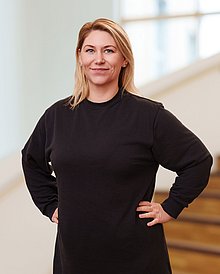How much screen time is appropriate for children?
A new guideline, which was developed with the involvement of Witten/Herdecke University, provides tips for the optimal use of screen media in everyday life.

How long can my child watch TV, sit in front of the computer or play with their smartphone? Families often ask themselves these and similar questions in everyday life. The German Society for Paediatrics and Adolescent Medicine (DGKJ) and Witten/Herdecke University (UW/H) have now published a new guideline to provide guidance on how to deal with screen media. It provides practical tips and is also of a preventative nature.
For children between the ages of 3 and 6, for example, the experts recommend running an hourglass or stopwatch while using a screen. This is because many children do not realise how much time they are spending on the devices. Alternatively, limiting use to individual days helps to avoid habits. For older children who already have their own consoles, it can be helpful to store the devices in the cupboard after playing - true to the motto: out of sight, out of mind. In total, the guideline includes 55 behavioural recommendations on the use of screen media. It also describes ways in which parents and doctors can deal with excessive use and addresses preventive measures in times of digital distance learning.
Prevention makes an important contribution to the healthy development of children
"Although many health risks of excessive media consumption in children are now known, there is still far too little talk about preventive measures - both in society and in medicine," says Prof Dr David Martin, Chair of Medical Theory, Integrative and Anthroposophic Medicine at the UW/H. "If we prevent excessive media consumption in childhood and adolescence, we can make an important contribution to healthy mental, spiritual and physical development."
The guidelines were developed under the direction of the German Society for Paediatrics and Adolescent Medicine e.V. Witten/Herdecke University formed and coordinated an expert commission for this purpose. The results were also discussed with patient representatives.
The AWMF S2k guideline is aimed at families as well as doctors, physicians and psychiatrists who treat children and adolescents. It is also intended to provide guidance to higher-level organisations such as health insurance companies, schools, nurseries, youth welfare offices, education and care offices, educational counselling centres and other individuals and institutions that deal with issues relating to child health and child welfare. In addition to the long version for professionals, a short version summarises the most important points for parents and guardians. Both versions are available on the website of the Association of the Scientific Medical Societies in Germany (AWMF): https: //register.awmf.org/de/leitlinien/detail/027-075
Further information
The scientific associations and organisations in the guideline commission are
- German Society for Addiction Research and Addiction Therapy (DG-Sucht)
- German Society for Social Paediatrics and Adolescent Medicine (DGSPJ)
- German Society for Social Medicine and Prevention (DGSMP)
- Professional Association of Paediatricians and Adolescent Doctors (BVKJ)
- Society for Mental Health in Early Childhood (GAIMH)
- Federal Centre for Health Education (BZgA)
- German Society for Midwifery Science (DGHWi)
- German Society for Psychology (DGPs)
- Federal Association of Doctors in the Public Health Service (BVÖGD)
- Patient representation through Fachverband Medienabhängigkeit e. V.
- Guideline coordination Witten/Herdecke University (UW/H)
Contact persons
Photos for download
Contact person

Svenja Malessa
Press Officer
Administration | Communication & Marketing
Alfred-Herrhausen-Straße 48
58455 Witten
Room number: 2.F05
